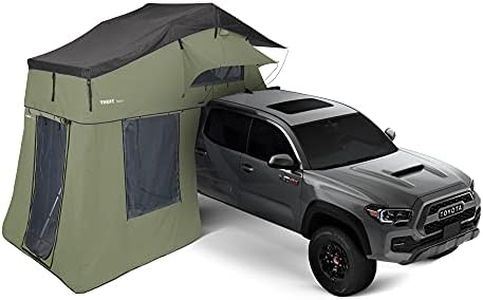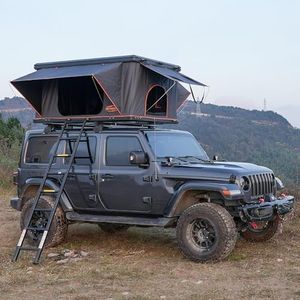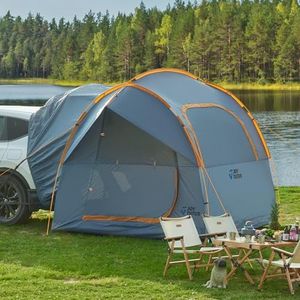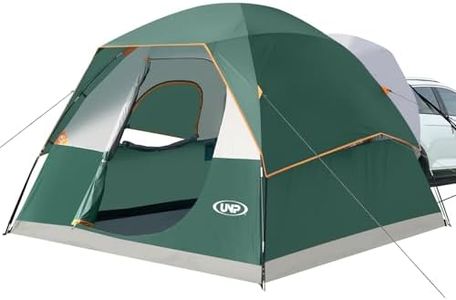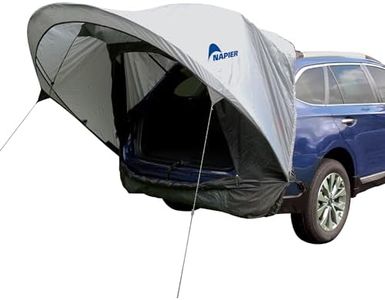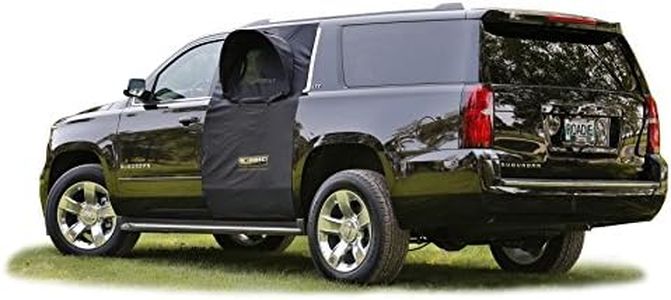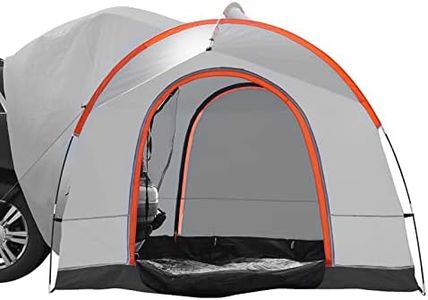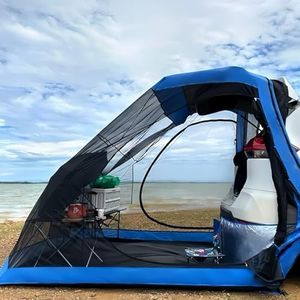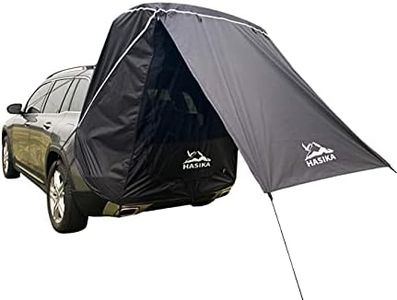We Use CookiesWe use cookies to enhance the security, performance,
functionality and for analytical and promotional activities. By continuing to browse this site you
are agreeing to our privacy policy
10 Best Suv Camping Tents
From leading brands and best sellers available on the web.Buying Guide for the Best Suv Camping Tents
Choosing the right SUV camping tent can make your outdoor adventures much more comfortable and enjoyable. These tents are designed to attach to your SUV, creating extra space and allowing you to access your vehicle easily while camping. When picking a tent, it's important to think about how many people will use it, the type of weather you'll encounter, and how easy it is to set up and pack away. Understanding the key features will help you find a tent that fits your needs and makes your camping experience better.CapacityCapacity refers to how many people the tent is designed to sleep. This is important because you want everyone to have enough space to sleep comfortably and store their gear. Tents are usually labeled as 2-person, 4-person, or even larger. Smaller tents are lighter and easier to set up, but may feel cramped if you have a lot of people or gear. Larger tents offer more space but can be heavier and take longer to assemble. Think about how many people will regularly camp with you and whether you want extra room for gear or pets when choosing the right capacity.
Attachment StyleAttachment style describes how the tent connects to your SUV. Some tents use sleeves, straps, or magnets to create a seal between the tent and your vehicle. This is important because a good seal keeps out bugs, rain, and wind, and makes it easy to move between your car and the tent. Some attachment styles are more universal and fit a wide range of vehicles, while others are designed for specific SUV shapes. If you want flexibility or plan to use the tent with different vehicles, look for a more universal attachment. If you want a snug fit and have a specific SUV, a tailored attachment might be better.
Weather ResistanceWeather resistance refers to how well the tent protects you from rain, wind, and other elements. This is important for staying dry and comfortable during your trip. Tents are made with different materials and may have features like waterproof coatings, taped seams, and sturdy poles. Some are designed for mild weather, while others can handle heavy rain or wind. If you mostly camp in good weather, a basic tent may be enough. If you expect rain or wind, look for a tent with strong weatherproofing features.
VentilationVentilation is about how well air flows through the tent. Good ventilation helps prevent condensation and keeps the inside of the tent comfortable, especially in warm weather. Tents may have mesh windows, vents, or doors to allow airflow. If you camp in hot or humid areas, look for a tent with plenty of mesh panels and adjustable vents. If you camp in cooler climates, you may want fewer openings to keep warmth inside.
Ease of SetupEase of setup refers to how simple and quick it is to put up and take down the tent. This is important because you don't want to spend a lot of time struggling with complicated instructions, especially after a long drive. Some tents use color-coded poles or pop-up designs to make setup easier. If you often camp alone or want a hassle-free experience, look for tents that are known for quick and easy assembly.
Packed Size and WeightPacked size and weight describe how big and heavy the tent is when it's packed away. This matters if you have limited space in your vehicle or need to carry the tent a distance from your car to your campsite. Smaller and lighter tents are easier to transport and store, but may offer less space inside. If you have plenty of room in your SUV and don't mind a heavier tent, you can choose a larger model for more comfort.
Floor DesignFloor design refers to the shape and material of the tent's base. Some tents have bathtub-style floors with raised edges to keep water out, while others have flat floors. The material can also affect durability and comfort. If you camp in wet areas, a bathtub floor helps keep you dry. If you want extra comfort, look for thicker or more durable floor materials.
